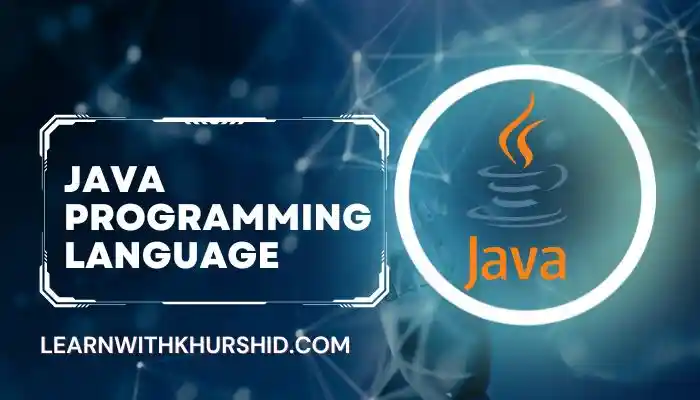50 Java Interview Questions with Answers: Java is a versatile programming language. This language is widely used in programming. In a survey, 49% of Java is used by the developer in the world. So there is a huge demand for Java programming developers. In this post, we are going to give the best 50 Java Interview Questions with Answers. We hope that these questions will help you to crack an interview.
50 Java Interview Questions with Answers
1. What is Java?
A: Java is an object-oriented, robust high-level programming language. It is used for developing applications that run on various platforms.
2. What are the main features of Java programming language?
The features of Java are
- platform independence
- object-oriented programming
- automatic memory management
- robust exception handling
- Simple
3. Explain the difference between JDK and JRE.
The full form of JDK is Java Development Kit. This kit contains software development tools for developing and compiling Java programs. The full form of JRE is Java Runtime Environment. This runtime environment executes the Java applications.
4. Difference between an object and a class.
- A class is a blueprint of an object.
- An object is an instance of a class.
5. What is the difference between a local variable and an instance variable in Java programming language?
A local variable is declared within a method or block. It is accessible only within that scope. The instance variable is declared in a class and is accessible throughout the class.
6. Explain the concept of method overloading.
Method overloading allows the creation of multiple methods with the same name but different parameter lists. The appropriate method is selected based on the arguments passed during the method call.
7. What is a constructor?
A constructor is a method that has the same as the class. It is used to initialize the instance variable and it is called when an object is created.
8. Can a constructor have a return type?
No, Constructor has no return type, not even void.
9. What is a static and non-static method in Java?
A static method is a class method. It belongs to the class itself. There is no requirement of an object for calling it. A non-static method is an instance method and it requires an object to call it or use it.
10. What is the difference between composition and inheritance in Java programming language?
Composition is a design technique where objects are composed of other objects. When a class acquires the properties of another class is known as Inheritance.
Read also:
Best 50 Java Multiple-Choice Questions To Test Your Skills, And Boost Your Knowledge
Best 55 Sports Quiz with Answers: MCQs on Sports General Knowledge, MCQ on Sports
Introduction To Data Communication And Networking Fundamentals 7 Layer Of OSI
11. What is the purpose of the “final” keyword?
The “final” keyword is used to make a variable, method, or class unchangeable. A final variable cannot be changed. The final method cannot be overridden in a sub-class, and a final class cannot be extended.
12. What is the difference between checked and unchecked exceptions?

Checked exceptions are checked at compile-time and must be handled using try-catch blocks or declared in the method’s throws clause. Unchecked exceptions, such as runtime exceptions, do not require explicit handling.
13. What is the “this” keyword used for?
The “this” keyword refers to the current instance of a class. It is used when instance variables and local variables with the same name.
14. What is the purpose of the “static” keyword?
The “static” keyword is used to define class-level variables and methods that are shared among all instances of the class.
15. What is the difference between String, StringBuilder, and StringBuffer?
String objects are immutable, while StringBuilder and StringBuffer are mutable. StringBuilder is not thread-safe. SringBuffer is thread-safe.
16. What is method overriding?
A sub-class method has the same name as the parent class method which will rewrite in the sub-class is known as method overriding. This will achieve run time polymorphism.
17. What is the difference between the equals() and == operators?
The equals() method is used to compare the content of objects for equality, while the == is a relational operator. It is used to compare the memory addresses of objects for reference equality.
18. What is the purpose of the “super” keyword?
The “super” keyword is used to refer to the superclass of a subclass. It is used to call the superclass’s constructor or to access the superclass’s methods and variables.
19. What is a package in Java?
A package is a way to organize related classes and interfaces into a single namespace. It helps avoid naming conflicts and provides better code organization.
20. What are access modifiers in Java?
Access modifiers are keywords used to control the accessibility of classes, variables, and methods. There are four access modifiers in Java public, private, protected, and default.
21. What is the purpose of the “try-catch-finally” block?
A: The “try-catch-finally” block is used for exception handling. Code that might throw an exception is placed within the “try” block, and the appropriate exception is caught and handled in the “catch” block. The “finally” block is used to execute code that should always run, regardless of whether an exception occurs or not.
22. What is the difference between a shallow copy and a deep copy in Java?
A: A shallow copy in Java creates a new object but the objects’ references are not copied. In contrast, a deep copy in Java creates a new object. It copies the contents of the original object’s fields, recursively copying any referenced objects.
23. What is the Java Virtual Machine or JVM?
A: The JVM is an abstract machine that executes Java bytecode. It provides platform independence by converting bytecode into machine-specific instructions.
24. What is the purpose of the garbage collector in Java?
A: The garbage collector automatically reclaims memory occupied by objects that are no longer referenced, freeing up resources and preventing memory leaks.
25. What are the wrapper classes in Java?
A: Wrapper classes are used to convert primitive data types into objects. Examples include Integer, Double, and Boolean.

26. What is the difference between an abstract class and an interface?
An abstract class can have method implementations and instance variables, while an interface only defines method signatures and constants. Any class can implement multiple interfaces but an abstract class can be extended once.
27. What is the Java Collection Framework?
The Java Collection Framework is a set of classes and interfaces. This framework provides an efficient way to store and manipulate groups of objects. It includes interfaces like List, Set, and Map, along with their implementing classes.
28. What is the difference between ArrayList and LinkedList in Java programming language?
The ArrayList is implemented as a resizable array. The LinkedList is implemented as a doubly-linked list. ArrayList is more efficient for random access and LinkedList is more efficient for insertions and deletions.
29. What is the “main” method in Java programming language?
The “main” method is the entry point of a Java program. It is where the program starts executing and is defined as the public static void main(String[] args)
30. What is the purpose of the “transient” keyword in Java programming language?
The “transient” keyword is used not to be serialized when an object is converted into a byte stream.
31. What are anonymous inner classes in Java?
Anonymous inner classes are classes without a name that are defined and instantiated at the same time. They are often used to define and implement event handlers.
32. What is the purpose of the “synchronized” keyword in Java?
The “synchronized” keyword is used to create synchronized methods or blocks, ensuring that only one thread can execute them at a time. It is used for thread safety in multi-threaded environments.
33. What is the purpose of the “volatile” keyword in Java programming language?
The “volatile” keyword is used to declare variables whose value might be modified by multiple threads. It ensures that the variable is always read from and written to the main memory, preventing thread caching issues.
34. What is a lambda expression in Java programming language?
A lambda expression is a concise way to represent an anonymous function. It allows the writing of functional interfaces more compactly, promoting functional programming in Java.
35. What is the difference between the final, finally, and finalize keywords in Java?
The “final” keyword is used to make variables, methods, or classes unchangeable. The “finally” block is used in exception handling to execute code that should always run, regardless of exceptions. Before an object is destroyed the “finalize” method is called by the garbage collector.
36. What is the purpose of the “break” and “continue” statements in Java programming language?
The Java break statement terminates a loop. It is also used to break a switch case block, in contrast, the “continue” statement is used to skip the remaining code in a loop and move to the next iteration.
37. What are autoboxing and unboxing in Java programming language?
Autoboxing is the automatic conversion of primitive data types to their corresponding wrapper classes, while unboxing is the automatic conversion of wrapper classes to primitive data types.
38. What is a deadlock in Java programming language?
A deadlock occurs when two or more threads are blocked indefinitely, waiting for each other to release resources, resulting in a deadlock situation where none of the threads can proceed.
39. What is the difference between a static variable and an instance variable in Java?
A: The static variable will be shared with all the instances of a class. It has a single copy in memory. An instance variable is specific to each instance of the class and has its own copy in memory.
40. What is the difference between a throw and a throws keyword in Java programming language?
The “throw” keyword is used to explicitly throw an exception. The “throws” keyword is used in method signatures to declare the exception types that the method may throw.
41. What is the purpose of the “assert” statement?
The “assert” statement is used for debugging purposes. It will check a condition and throws an AssertionError if the condition is false. It is typically used to assert the correctness of assumptions during development.
42. What is the difference between a static initializer block and an instance initializer block?
A static initializer is used to initialize static variables. It is executed only once when the class is loaded. An instance initializer is used to initialize instance variables. It is executed each time an instance of the class is created.
43. What is the purpose of the “enum” keyword?
The “enum” keyword is used to define an enumerated type, which represents a fixed set of constants. Enums provide type safety and can be used in switch statements.
44. What is the Java Memory Model (JMM)?
The JMM defines the rules and guidelines for how threads interact with memory in a multi-threaded environment. It ensures that changes to shared variables are visible to other threads.
45. What is the difference between a stack and a heap in Java?
The stack is used for method calls and local variables, and memory is allocated and deallocated automatically. The heap is used for dynamic memory allocation. The objects and memory must be manually allocated and deallocated.
46. What is the purpose of the “String.format()” method?
The “String.format()” method is used to create formatted strings by replacing placeholders with values. It uses formatting patterns similar to those used in the printf() function.
47. What is the purpose of the “compareTo()” method?
This method is used to compare two objects for ordering. This will return a positive value if the current object is greater. It will return a negative value if the current object is less than the specified object otherwise zero.
48. What is the difference between a HashSet and a TreeSet?
HashSet is an unordered collection that allows null values and provides constant-time performance for basic operations. TreeSet is a sorted collection that does not allow null values and provides log-time performance for basic operations.
49. What is the purpose of the Thread.sleep() method?
A: Thread.sleep() method is used to pause the execution of the current thread. It is paused for a specified amount of time. It allows other threads to execute.
50. What is the purpose of the “System.arraycopy()” method?
System.arraycopy() method is used to copy elements from one array to another. It can be used for both partial and complete array copying.



